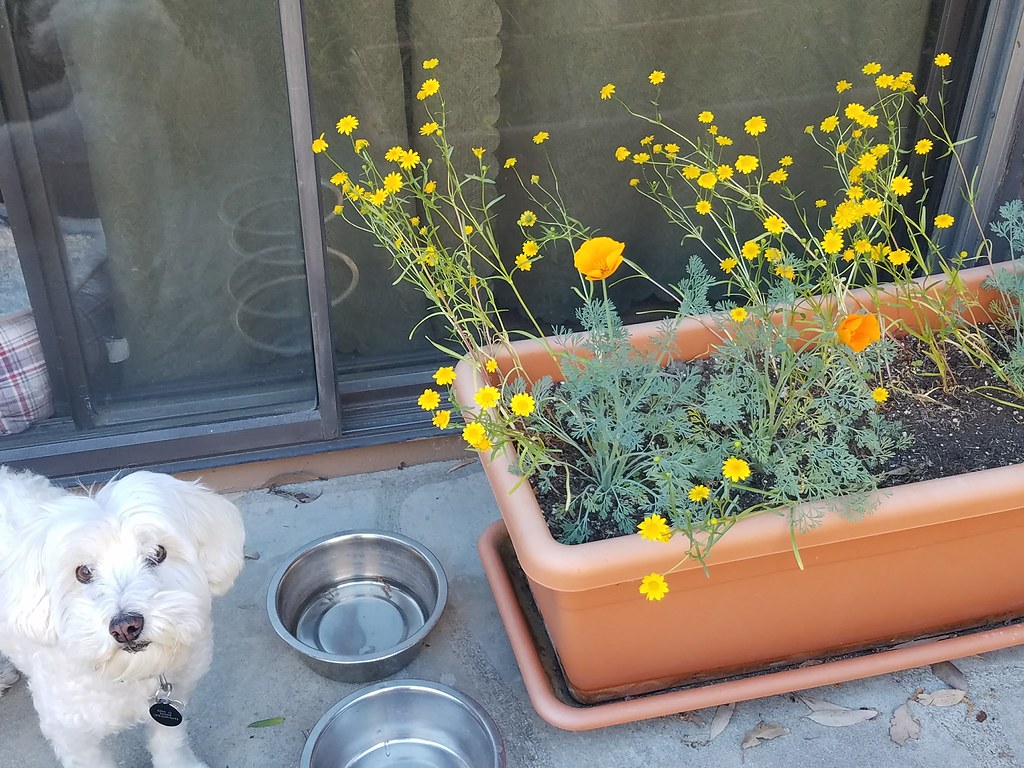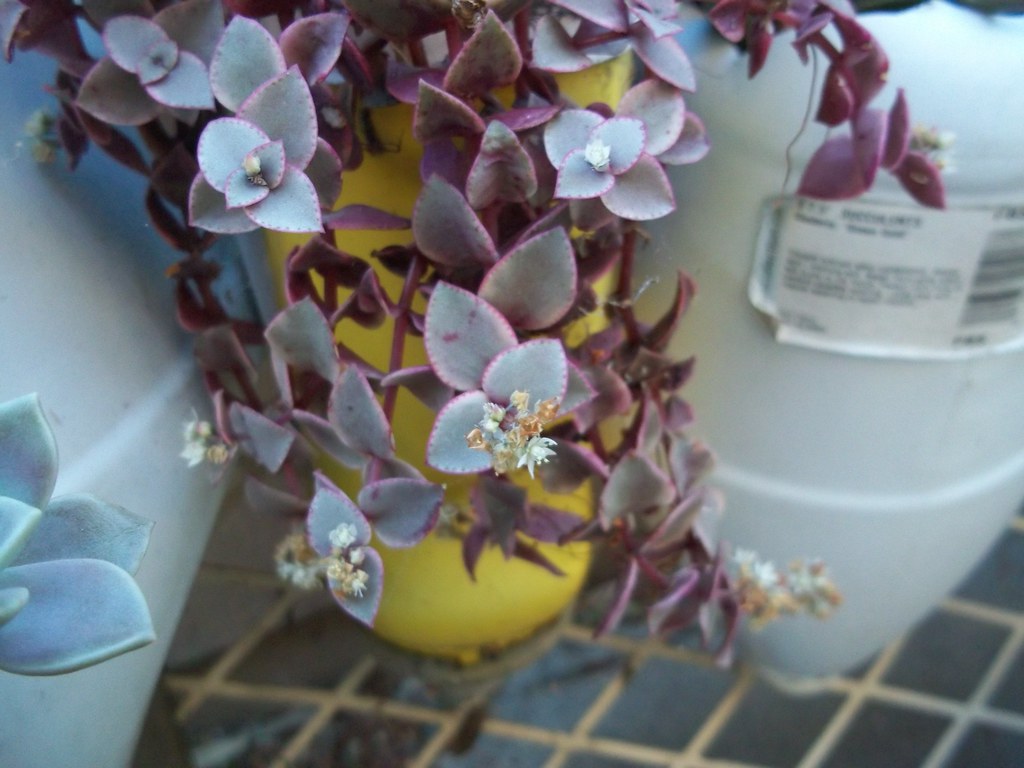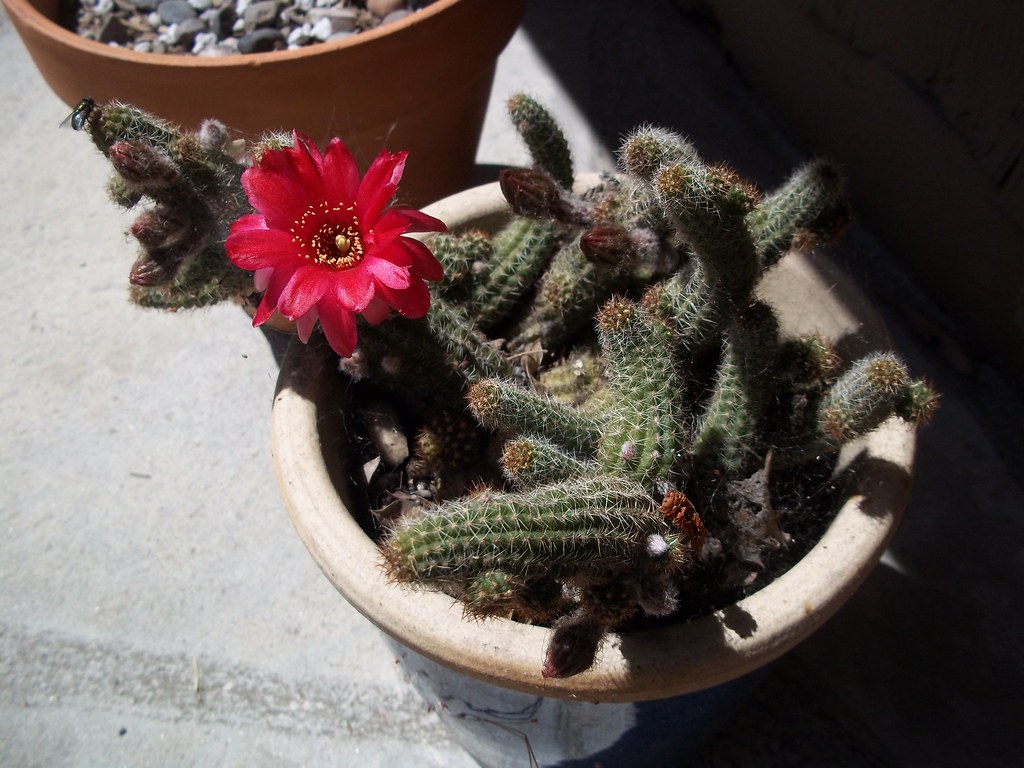Take for example, this container I planted several years in a row with California and New Mexico native wildflowers. This year, a spray of Lasthenia californica (common name: goldfields) & Eschscholzia californica (common name: golden poppy) appeared. The photo above was taken on March 31, two weeks after settling in our new location in Northridge, CA.
The container garden made the move with us, and all the plants have survived relocation. Many of my succulents are flowering, Graptopetalum paraguayense (common name: Ghost plant) has pretty grey leaves with a pinkish cast and a delicate little flowers on an extended stem. You can see a bit of Senecio mandraliscae (common name: Blue chalk sticks) below.
I love the chocolatey color of Echeveria compressicaulis leaves and it looks like it's putting out an impressive raceme. I can't wait to see how the flowers look when they open. It is framed in this photo by Crassula tetragona (left), Crassula argentea (right), Sedum pachyphyllum (upper right), and Portulacaria afra (above).
I love how this photo makes it look like the perimeter of each leaf is hand-stitched. This is Crassula pellucida subsp. marginalis 'Variegata' (nickname: Calico Kitten). If that's not one of the sweetest things you've ever seen, I don't know what's wrong with you. You get just a glimpse of Graptopetalum paraguayense to the left.
The beauty above started flowering before we moved. Sedum clavatum is comprised of frosty blue-green rosettes named for 'clava' meaning "club" for the baseball shape of the sepals. The complexity of these tiny flowers is mesmerizing. A compact inflorescence of many white star-shaped flowers appears in spring to early summer that take a pink hue with age.
I always know the end of the school year is near when I see my Echinopsis chamaecereus (common name: peanut cactus) flowering (see prev. post). You can also see a handy pollinator. I've already had good luck with harvesting seeds, so I know the winged creatures are doing good work. We've also seen many of the crane fly this season, but they are not attributed with much pollination work.
I love the more squat Rebutia krainziana and its bold orange flower. I've been reading about the sacral chakra and the mantras associated with it: I am inspired.I am creative.I am joyful.I am in control.I am unique.I am special.I Feel. RIP to my Opuntia basilaris and Gymnocalycium mihanovichii. One got too much water and I'm not sure what happened to the other, but they're both shriveled up and dead now.
Last but not least, I will leave you with a flower of Capsicum annuum. Three out of the seven pepper plants I had last year survived the winter. However, I won't really know which is which until they produce fruit! The tomato (Solanum lycopersicum) 'Cosmic Eclipse' is still producing as well. I don't know how they'll fare in the heat of the summer, but I'll enjoy them for as long as they live.








No comments:
Post a Comment